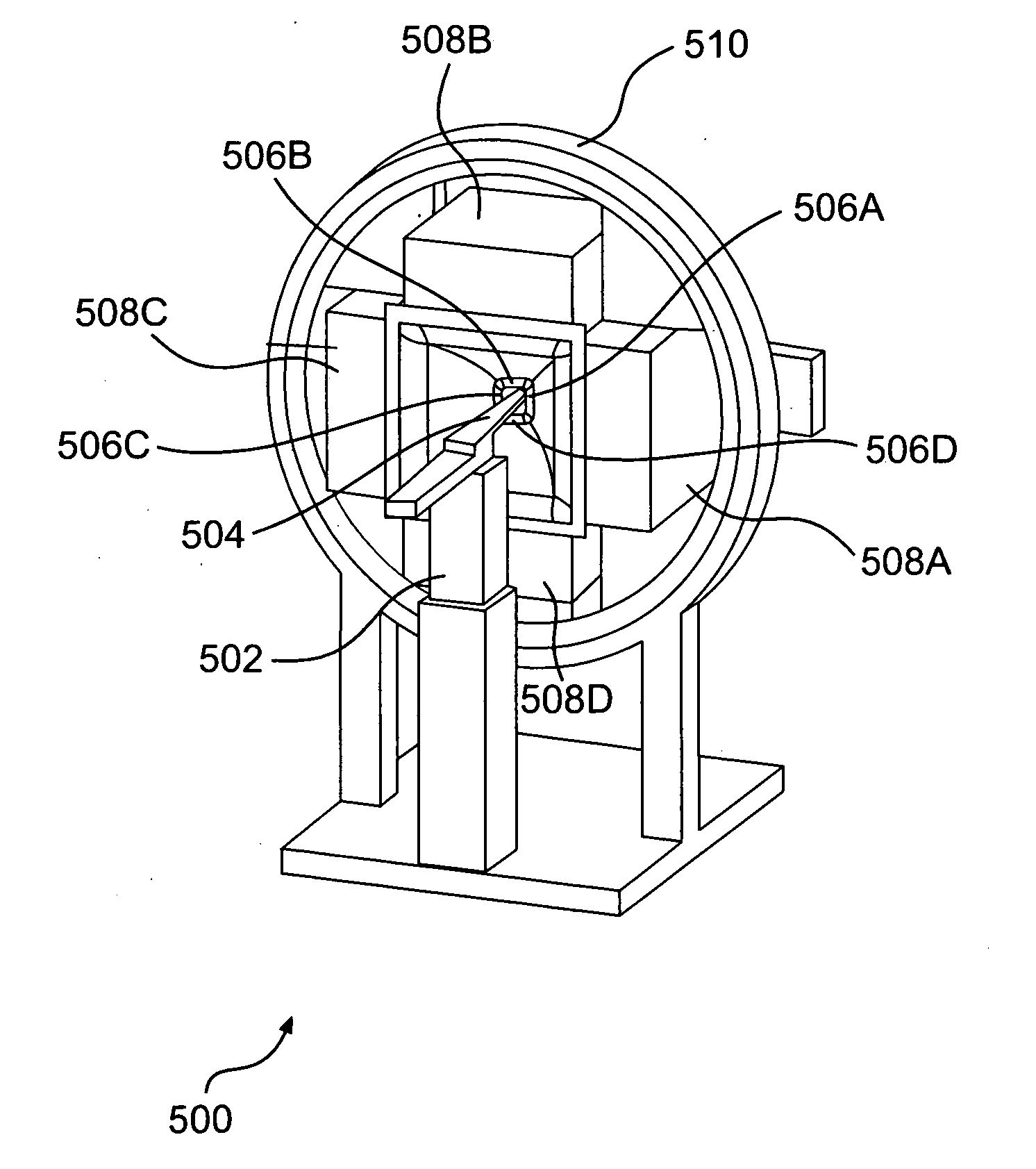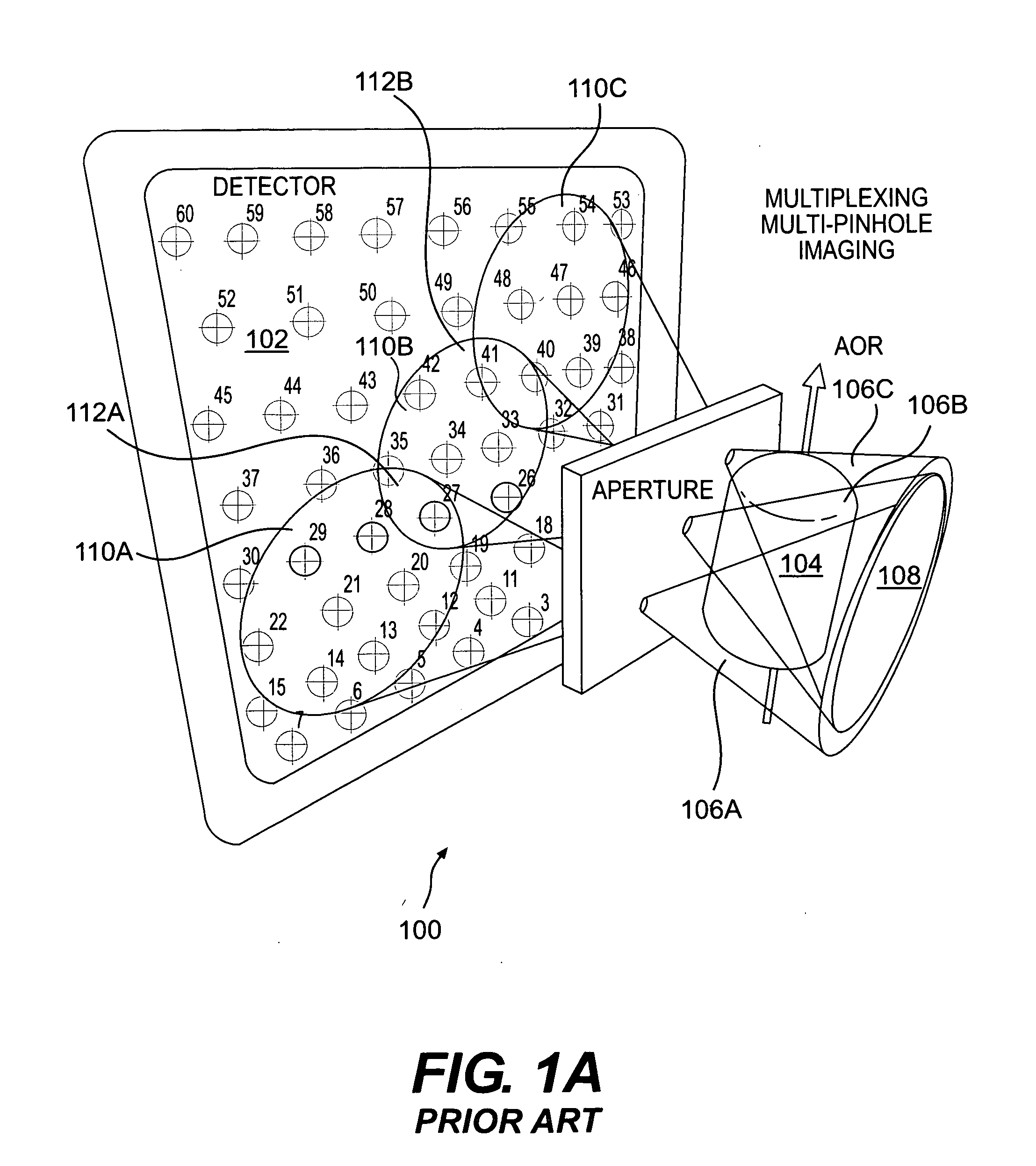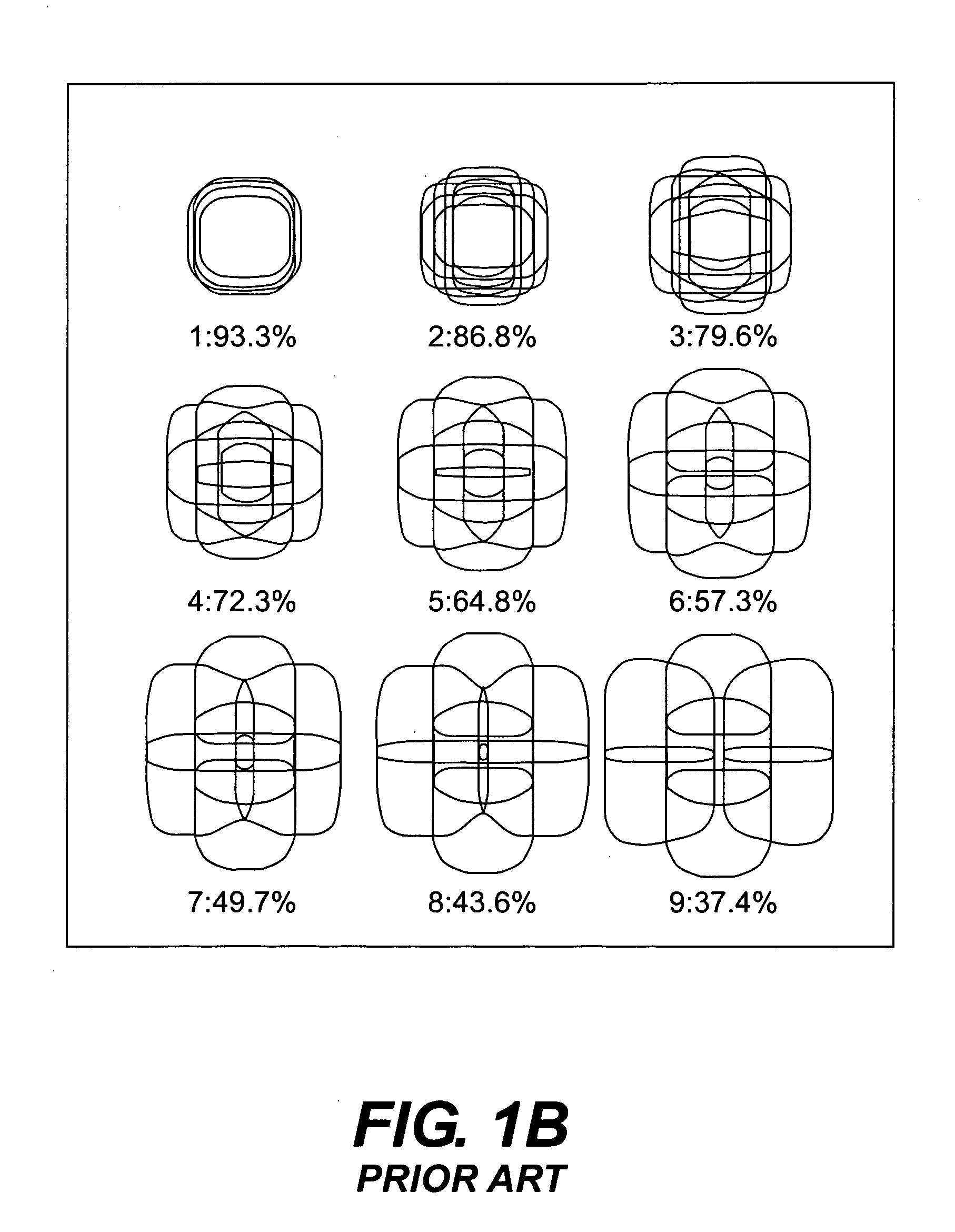Single-photon emission computed tomography (SPECT) using helical scanning with multiplexing multi-pinhole apertures
a multi-pinhole technology, applied in the field of single-photon emission computed tomography (spect) using helical scanning with multiplexing multi-pinhole apertures, can solve the problems of image artifacts, decrease in reconstruction quality, image artifacts, etc., to improve sensitivity and resolution in the spect imaging system, increase overlapping projections, and increase angular sampling and pinholes
- Summary
- Abstract
- Description
- Claims
- Application Information
AI Technical Summary
Benefits of technology
Problems solved by technology
Method used
Image
Examples
Embodiment Construction
[0022] An exemplary SPECT imaging device 300, in which the present invention may be implemented, is shown in FIG. 3A. System 300 includes at least one imager 302, object support structure 304 (translation stage), and system 306. Turning here briefly to FIG. 3B. The imager 302 includes a multi-pinhole collimator 308 and a detector 310. The imager 302 is operable to rotate in the transaxial plane around an object of interest (not shown) being supported by the object support structure 304. The imager 302 can be rotated by a motor, such as a gantry, under the control of system 306. The imager 302 may be rotated a number of degrees after a projection is taken. The imager 302 can be rotated an unlimited amount either using slip-ring electronics or by using a technique by which the imager is rotated in an alternating clock-wise and counter-clockwise motion while translating the object support structure forward or backward respectively to generate a helical orbit.
[0023] In an embodiment of...
PUM
 Login to View More
Login to View More Abstract
Description
Claims
Application Information
 Login to View More
Login to View More - R&D
- Intellectual Property
- Life Sciences
- Materials
- Tech Scout
- Unparalleled Data Quality
- Higher Quality Content
- 60% Fewer Hallucinations
Browse by: Latest US Patents, China's latest patents, Technical Efficacy Thesaurus, Application Domain, Technology Topic, Popular Technical Reports.
© 2025 PatSnap. All rights reserved.Legal|Privacy policy|Modern Slavery Act Transparency Statement|Sitemap|About US| Contact US: help@patsnap.com



